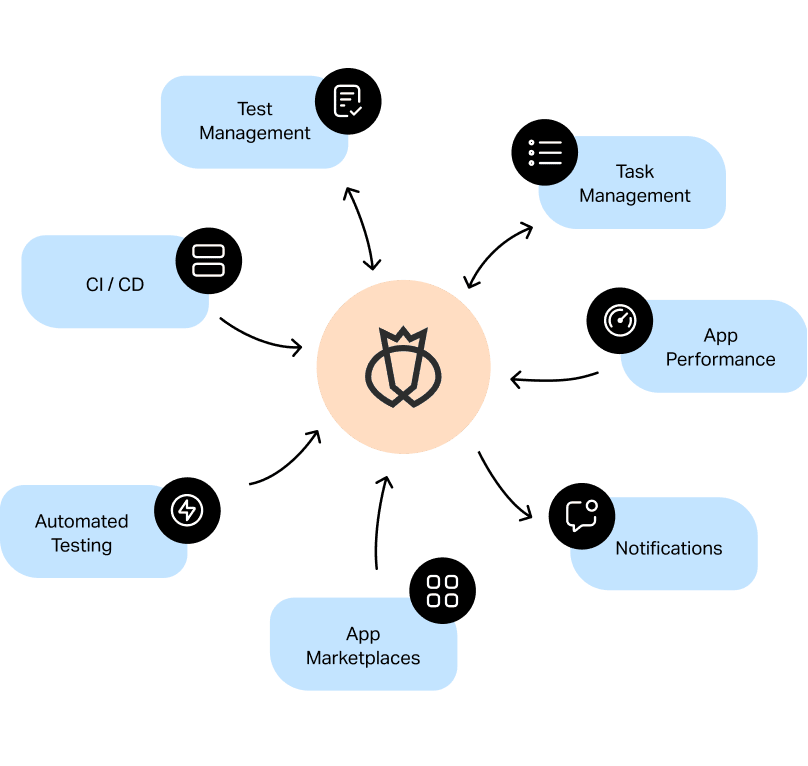Effective Automation Testing: Enhancing Software Program Integrity and Rate
Effective Automation Testing: Enhancing Software Program Integrity and Rate
Blog Article
From Manual to Automated Testing: A Comprehensive Guide to Transitioning Efficiently and Successfully
In the realm of software screening, the shift from guidebook to automated processes has become a significantly crucial transition for companies looking for to enhance performance and precision in their testing techniques. The trip from manual to automated screening is not without its difficulties, but when come close to tactically and with a clear strategy in mind, the benefits can be considerable.
Advantages of Automated Examining
Automated screening uses numerous benefits, boosting effectiveness and precision in software program growth processes. Automated examinations can be run at the same time on numerous tools and operating systems, considerably speeding up the testing phase compared to manual screening.
Furthermore, automated testing makes sure a greater level of precision in identifying problems. Uniformity in screening is additionally enhanced, as automated examinations implement the exact same actions exactly each time they are run.
Choosing the Right Devices

First of all, assess your objectives and needs. Understand the range of your task, the modern technologies involved, and the skill set of your team. This analysis will certainly assist you determine the abilities and attributes you require in your screening tools.
Secondly, think about the compatibility of the tools with your existing procedures and systems. Smooth combination with your current software program development lifecycle is vital to guarantee a smooth shift to automation.
Furthermore, review the scalability and versatility of the devices. As your screening requires evolve, the tools should be able to adapt and fit changes properly.
Lastly, aspect in the support and neighborhood around the tools. Durable support and an active individual community can give important resources and aid when executing automated testing. By very carefully considering these aspects, you can select the right tools that align with your demands and established the stage for a successful shift to automated screening.
Creating Effective Examination Manuscripts

When crafting test scripts, it is vital to consider the certain needs of the software application being checked and ensure that the scripts address all essential functionalities. Clear and detailed calling conventions for test scripts and test instances can enhance readability and maintainability. In addition, including mistake handling mechanisms within the test manuscripts can assist in determining and attending to issues without delay.
Additionally, arranging examination scripts into modular components can boost reusability and scalability, minimizing redundancy and enhancing efficiency in test script upkeep. Normal testimonials and updates to examine manuscripts are important to equal evolving software demands and functionalities. By complying with these principles, testers can create effective and robust test manuscripts that add substantially to the success of automated testing processes.
Integrating Automation Into Workflows
Effective combination of automation devices right into existing process enhances and simplifies processes productivity within software application growth cycles. When including automation into operations, it is essential to identify repetitive tasks that can be automated to save time web link and lower human mistake. By effortlessly incorporating automated testing tools like Selenium or Appium pop over here into the software program advancement lifecycle, teams can achieve faster feedback on code adjustments, bring about quicker insect discovery and resolution. This integration enables continual testing throughout the growth procedure, making certain that any kind of issues are recognized at an early stage, causing higher software program high quality. Furthermore, automation can be used to set off tests immediately after each code devote, giving instant validation and freeing up testers to concentrate on even more facility circumstances. Correct combination of automation tools calls for cooperation in between advancement, testing, and operations groups to develop a unified workflow that optimizes effectiveness and effectiveness in supplying high-quality software.
Making Sure a Smooth Shift
Efficiently transitioning to automated testing includes meticulous planning and careful execution to optimize and decrease disruptions efficiency in the software program advancement process - automation testing. To make certain a smooth shift, it is necessary to start by conducting a comprehensive analysis of the present screening procedures and determining areas where automation can bring one of the most considerable advantages. Engaging with all stakeholders early on at the same time, consisting of developers, testers, and job supervisors, is crucial for gathering support and buy-in for the automation effort
Interaction is crucial throughout this change stage. Clear interaction of the goals, benefits, and assumptions of automated screening assists to take care of any kind of resistance this or concerns that may arise. Additionally, offering appropriate training and sources for staff member to upskill in automation devices and methods is essential for making certain an effective shift.

Conclusion
To conclude, transitioning from handbook to automated screening uses numerous benefits, consisting of boosted performance and reliability. By picking the appropriate tools, creating effective examination manuscripts, and integrating automation seamlessly right into process, companies can ensure a smooth and effective change. It is necessary to accept automation as an important property in software testing processes to boost total quality and productivity.
In the world of software program screening, the shift from handbook to automated processes has actually ended up being a progressively crucial shift for companies looking for to enhance efficiency and accuracy in their screening techniques. Automated examinations can be run concurrently on multiple devices and operating systems, significantly speeding up the screening phase compared to hands-on testing. Consistency in testing is likewise improved, as automated examinations implement the very same actions specifically each time they are run.To make sure the successful application of selected screening devices, the creation of effective examination scripts plays an important role in validating the capability and performance of automated procedures - automation testing. By following these concepts, testers can produce efficient and robust test scripts that contribute substantially to the success of automated testing processes
Report this page